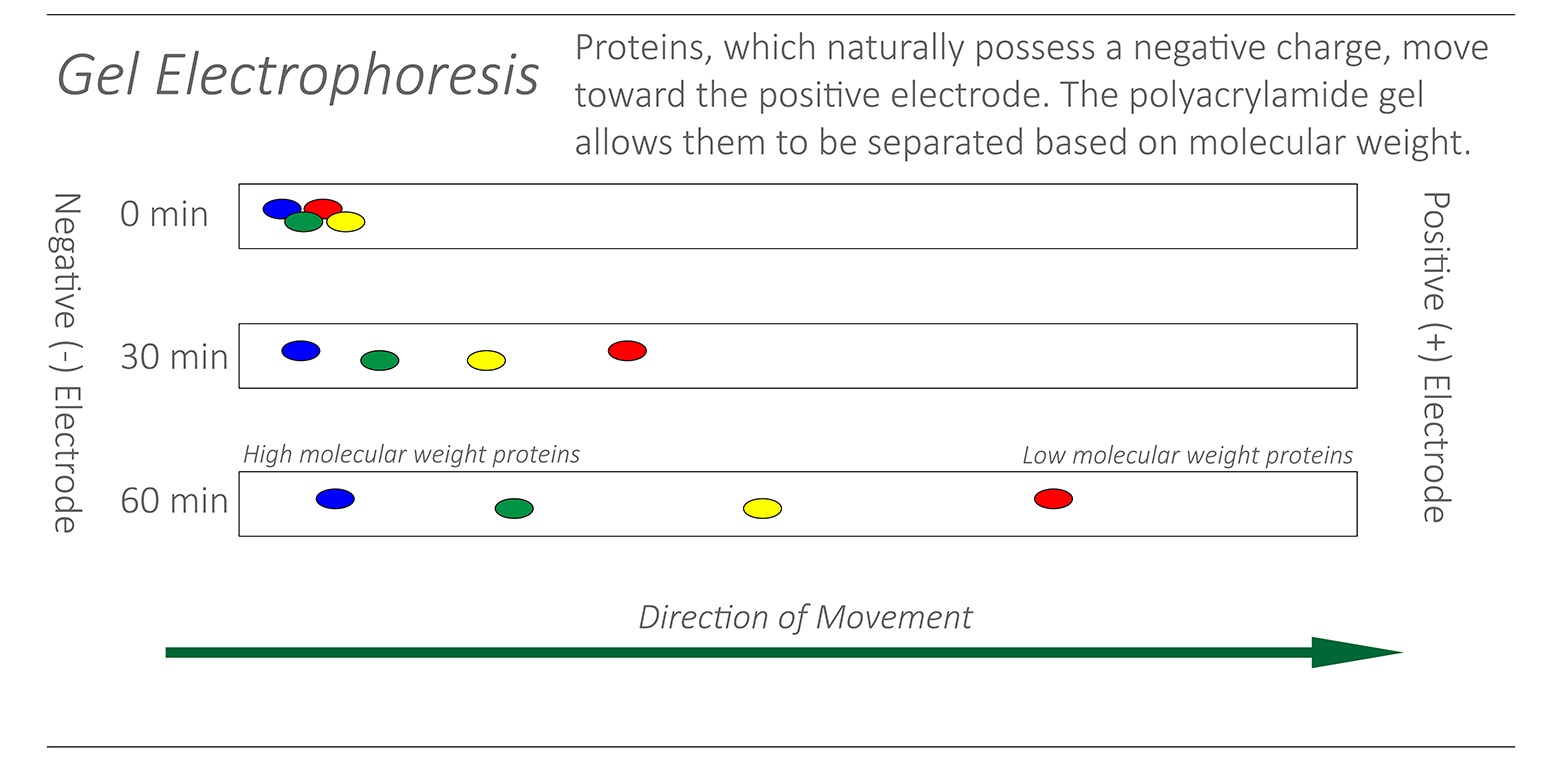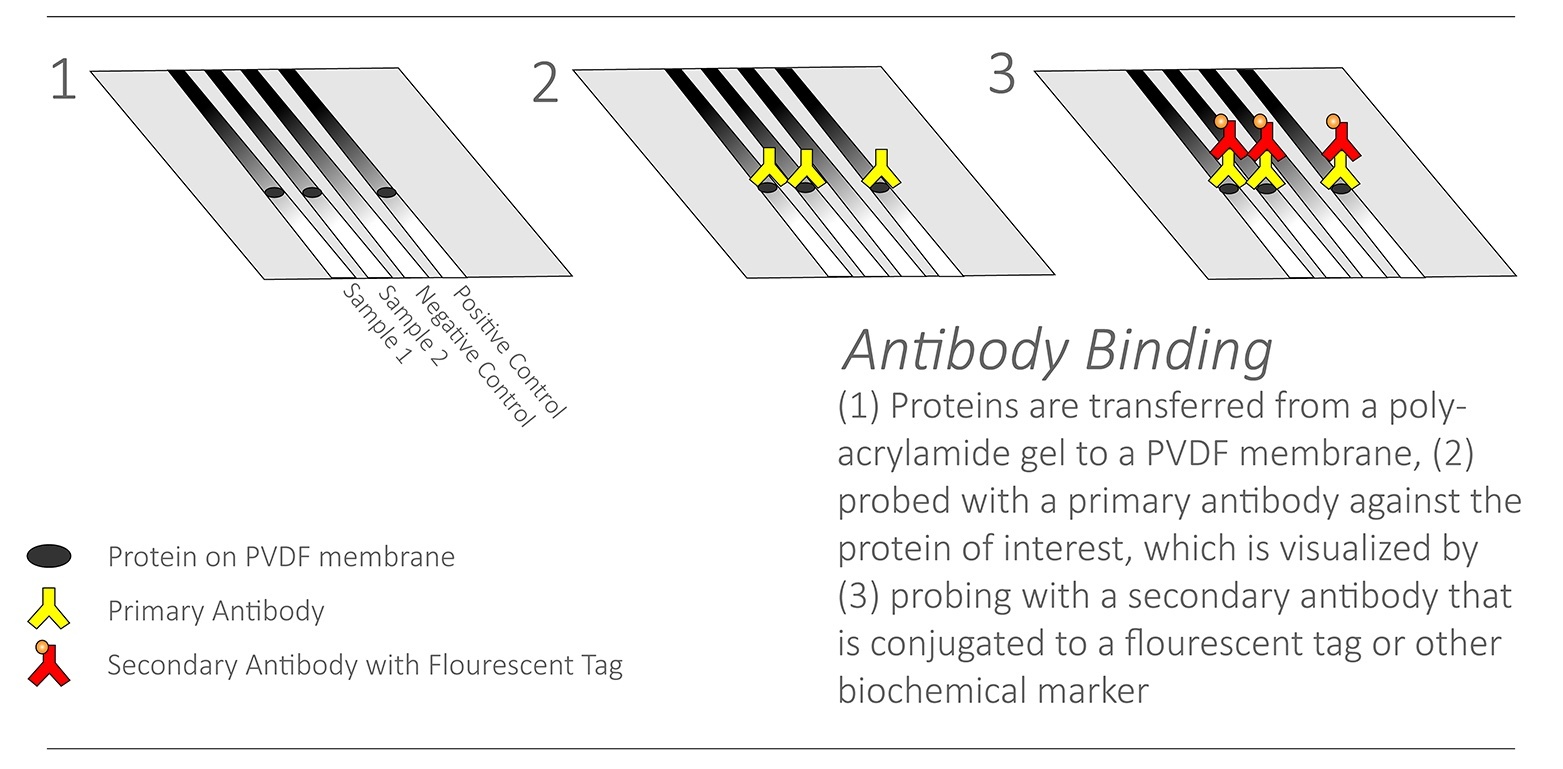Homogenized protein is the main substrate of the Western blot protocol. Samples can be isolated from any living organism, including humans, rats, mice, cell culture, or others. Sample preparation includes a series of steps intended to 1) lyse cell membrane and other structures 2) evenly mix protein homogenate throughout the sample and 3) remove lipids and other excess cellular material that may provide a false signal or clog the gel during the electrophoresis step. Most often, a specially formulated lysis buffer, such as RIPA (Radioimmunoprecipitation assay) buffer, is added to the sample extract to assist in the breakdown of cell membranes. Lysis can then be accelerated manually, using physical tools such as a blender, sonication device, or mortar and pestle, though such techniques may be time consuming and somewhat inconsistent across samples. Another option is to perform a fully chemical lysis, which is gentler on the sample but may limit the potential applications later on.
Once the homogenate is obtained, the protein concentration in each sample must be measured to ensure equal starting weights in the final experiment. There are several forms of colorimetric assays that can be performed at this stage:
- • A bicinchoninic acid assay (BCA assay), also known as the Smith assay, is a quick and accurate method for making measurements across a large number of samples. It can be performed in 96-well plates, presuming a 96-well plate reader is available to take the necessary measurements. The assay volume is relatively small, and the incubation time is under an hour.
- • The closely related Bradford assay performs roughly the same function as a BCA assay. This assay uses a spectrophotometer, readily available in most labs, to make measurements after only a short (approx. 5 minute) incubation period.
- • Some researchers may elect to use a NanoDrop or similar device to take protein concentration measurements. While this is a fast, cheap, and quick method for obtaining approximate concentrations, it is not advisable for repeat experiments (higher inter-assay variation resulting from calibration errors) or experiments with large numbers of samples (higher intra-assay variation resulting from residual proteins remaining between sample measurements).
The concentration of the sample is measured in mass (usu. μg)/volume (usu. μL) and will usually be diluted to 1-2.5μg/μL so that a final sample volume of 20μL contains 20-50μg of sample. Again, the exact concentration and weight requires optimization to account for protein availability and gel size. The key requirement is that all samples must contain the same protein weight, allowing for comparison of relative expression at the end of the experiment.



